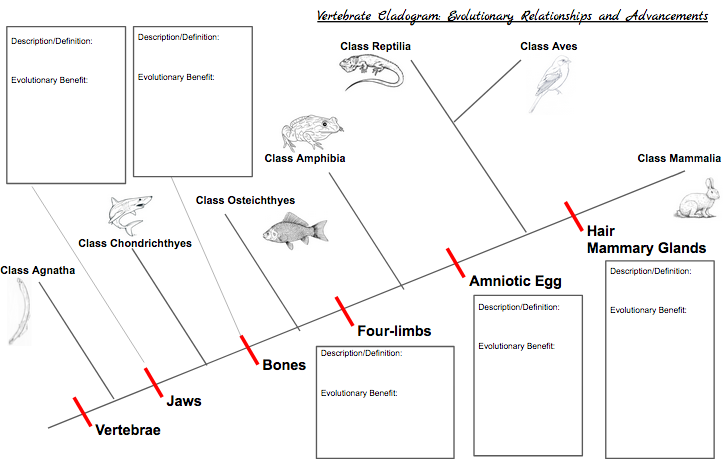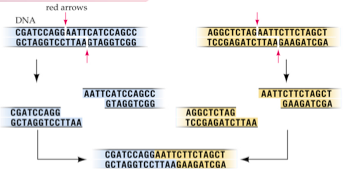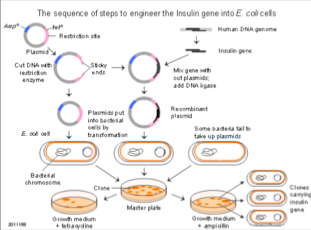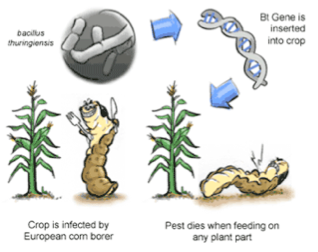This post will be continuously updated throughout the course. I will link answer keys, test reviews, notes, review answer keys with explanations, beneficial links, etc.
Life Science 11- Rough schedule – This is subject (and will) change based on our progress through the class. The assignments listed will be completed, but dates in particular will fluctuate and more can be added.
Thursday, July 4th
Taxonomy, Evolution, Cladistics Virtual Lab
Cladogram Practice genetic key
Friday, July 5th
Cladisitics and Evolution Notes (Part 1 is expected for today) – Slides 52-81
HHMI Origin of Tetrapods: Click and Learn
Monday, July 8th
Evolution Notes – Slides 80-133
Video: Natural Selection – Stated Clearly
Video: Darwin’s Finches – Evolution in Real Time
Peppered Moth – Natural Selection Virtual Lab
PhET – Natural Selection Simulation (Great but requires download)
Evolution Test Review (Key Posted Tuesday afternoon)
Tuesday, July 9th
Additional Information: Cellular Respiration (more detail than needed for Bio 11)
Evolution Test Review – Answer Key
July 10th
Homework – Click here or bit.ly/meiosissummer1
- Make sure you understand the basics of Meiosis – identify each stage, key differences between meiosis and mitosis, how it leads to greater genetic diversity. You do not need to memorize intricate wording and details like role and development of microtubles, chiasma, tetrad, cleavage, etc.
- Answer the questions: Write them on paper, email them to me, whatever works for you!
Thursday, July 11th
Microbiology Notes Today – 49-70 (Virus structure, life cycle, characteristics of life)
Friday, July 12th
Microbiology Notes Today – 49-70 (Virus structure, life cycle, characteristics of life)
Hydra Lab – Walk through under microscope (May help if observations were challenging)
Homework: Finish hydra lab for Monday!
Monday, July 15th
Microbiology Notes Today – 72-89 (Human Immune System)
Tuesday, July 16th
Microbiology Notes Today – 90-112 (Vaccines) + 3-18 (Bacteria Basics)
Review: How Vaccines Work:
Review: Herd Immunity
Viruses and Human Immunity Review Answer Key
Homework: Virus Analogy Due Tomorrow!
Suggested study plan – Finish the analogy. This will help you study a key part of the unit. Complete the “Viruses and Human Immunity Review” and then check your answers. Make corrections and note your mistakes. Finish studying this section tonight.
Tomorrow focus on studying Bacteria!
Wednesday, July 17th
Microbiology Notes Today – 19-47 (Kingdoms, antibiotic resistance, and lab skills)
Four Quadrant Streak Virtual Lab
Bacteria Test Review Answer Key
HYDRA LAB WILL NOT BE ON THE TEST.
Everything else within the google slides can be tested – including the “Do antibiotics cause antibiotic resistance?” acitivity we modeled today. Remember: antibiotics do not cause antibiotic resistance – these are traits that develop randomly through mutation. Antibiotics act as a selective pressure that selects for bacteria with this trait. These traits appear randomly, but are selected in a non-random way by their environment. Survival of the fittest!
The “Antibiotic Penicillin and Beyond” Article – things to know: narrow spectrum vs. broad spectrum antibiotics, rise of antibiotic resistant population due to over prescription, sub-therapeutic antibiotics.
Friday July 19th and Monday July 22th – Simple Invertebrates
Phylum Porifera – Sponge Notes
Phylum Cnidaria – Jellies, Anemones, Corals
Phylum Platyhelminthes – Flatworms
Tuesday July 23rd
Phylum Annelida – Segmented Worms
Simple Invertebrate Test Review
July 24th – 26th
Phylum Mollusca Notes (From Slide 36)
Squid procedure (Dissection Info)
Review Videos:
Phylum Echinodermata – Sea Stars, Urchins, Sea Cucumber (Notes – see classes at the end. Just fill in the review table, don’t need to know deeper)
Invertebrate cladogram Summary
Monday, July 29th
Class Osteichthyes (Bony fish)
Homework:
- Use the notes above to fill in the vertebrate cladogram. You are expected to know what these derived characters are and the benefits. Remember: if the derived character appeared before the class all classes above will have it. (Ex. for amniotic egg look in class reptilia notes). I also suggest that you fill in any missing details on your table as well.

If you did not get a copy of the table you can print it again – here is the link
Tomorrow, you will have to write a paragraph response based on two trends we see in vertebrates (i.e. digestive system, circulatory system, or cephalization) and the benefits of this increasing complexity.
The question is: What evolutionary trends do you see emerging across Subphylum Vertebrata? How do these trends relate to the diversity of the subphylum?
Supporting Information and examples – for summer school, I suggest focusing on circulatory, digestive, and cephalization.
Extra Heart Information:
Hearts have 2 types of chambers: atria and ventricles. Atria are where blood enters the heart and ventricles pump the blood out of the heart. Hearts take in oxygen poor blood, pump it through the pulmonary circuit (lungs/gills) where it gets oxygenated, and then they pump it out to the rest of the body through the systemic circuit. There are many small veins (take blood to the heart) and arteries (carry it away) which connect the heart to the pulmonary circuit and keeps it all running right. Blood pressure has to be carefully balanced in all tubes so that flow pressure is maintained and blood keeps moving, but not so fast as to explode certain areas or capillaries.
Given all this, there are 3 basic ways to make a heart found in animals: a 2 chambered heart, a 3 chambered heart, and a 4 chambered heart. Fish have 2 chambers, one atrium and one ventricle. Amphibians and reptiles have 3 chambers: 2 atria and a ventricle. Crocodiles are the one reptilian exception, as they have 4 chambers (2 atria, 2 ventricles). Birds and mammals have 4 chambers (2 atria and 2 ventricles).
Differences between the hearts:
The fish heart is much different than the amphibian/reptile/bird/mammal heart. Fish hearts simply draw in deoxygenated blood in a single atrium, and pump it out through a ventricle. This system is termed “single circulation”, as blood enters the heart, gets pumped through the gills and out to the body.
3 and 4 chambered hearts have a pulmonary circuit (pathways taking blood from heart to lung and back to heart) that is very complex and must be set up such that blood can travel from the heart to become oxygenated in the lungs and then be properly pumped back the heart and out to the body through the systemic circuit. The 3 (and 4) chambered heart has “double circulation” (figure 1b and c) and is quite different from “single circulation” of fishes.
Tuesday, July 30th
Goal of the project: To focus on developing research and critical thinking skills while expanding upon an area of interest and connecting classroom concepts. Use creative thinking to create an informative piece of media that can be shared to encourage education of the topic.
Possible Topics (there are more!):
Wildlife Trade – Shark finning, ivory trade, bush meat, or fur trade
Ocean Acidification
Emissions – Global warming due to methane/CO2
Animal Agriculture
Biomagnification/Bioaccumulation of Plastics or mercury
Resource Extraction – i.e. deforestation
Coral Bleaching
Example projects:
Wildlife Trade: Snow Leopard part 1
Wildlife Trade: Snow Leopard part 2
July 31st
Citation Example and Expectation
Research: [10]
Goals: Students can search for information about the natural sciences and use a variety of different sources and differentiate facts from values. Students demonstrate informed skepticism and use scientific knowledge to evaluate claims in primary and secondary sources and can effectively paraphrase and use in-text citations to support their findings.
| Level E – 5-6 | 6.5 | Level C – 7-8 | 8.5 | Level A – 9-10 |
| Student has effectively found and applied research from many different secondary sources. A variety of sources have been used that support the argument being presented and are all listed in the works cited. | Student has effectively found and applied research from many different sources including primary and secondary sources. A variety of sources have been used that support the argument being presented. Paraphrasing has been effectively used to retain voice while the use of at least one in-text citations from an authority is present to support the argument. | Student has effectively found and applied research from many different sources including primary and secondary sources while commenting on potential limitations. Many sources have been found that support each other, or alternative theories/facts have been compared and supported. Paraphrasing has been effectively used to retain voice while the use of in-text citations from authorities support key arguments. |
For primary sources (immediate, first hand accounts or from the data collector or researcher) use your VSB databases (Science in Context or EBSCO) or Google scholar (Link)
August 1st
Confused about trophic cascades? Try this click and learn related to the video we watched:)
Project – Looking at Using Sources:
depending on why the source is being used and what information the source provides.
When to Paraphrase
Paraphrasing provides an author the opportunity to tailor the passage for the purpose of his or her own essay, which cannot always be done when using a direct quote. Paraphrasing should be used to
- Further explain or simplify a passage that may be difficult to understand. It could be that the topic, such as the process of extracting stem cells, is particularly difficult to follow, or that the author has used language that further complicates the topic. In such situations, paraphrasing allows an author to clarify or simplify a passage so the audience can better understand the idea.
- Maintain the flow of the writing. Each author has a unique voice, and using direct quotes can interrupt this voice. Too many quotes can make an essay sound choppy and difficult to follow. Paraphrasing can help communicate an important idea in a passage or source without interrupting the flow of the essay.
- Eliminate less relevant information that does not add to your report.
- Communicate relevant statistics and numerical data.
When to Quote
Direct quotes should be used sparingly, but when they are used, they can be a powerful tool As a rule, avoid using long quotes when possible, especially those longer than three lines. When quotes are employed, they should be used in the following ways:
- Authority: Provide indisputable evidence of an incredible claim. Directly quoting a source can show the audience exactly what the source says so there is not suspicion of misinterpretation on the author’s part.
- Vividness: Communicate an idea that is stated in a particularly striking or unique way. A passage should be quoted if the source explains an idea in the best way possible or in a way that cannot be reworded. Additionally, quoting should be used when the original passage is particularly moving or striking.
- Precision: When an important phrase could be lost in paraphrasing, quotation is preferable..
In-text citations:
Direct quotes need to always need to be followed with an in-text citation in the form of (author last name, date published) (Pletsch, 2017).
Any data tables, graphs, charts used in your report must have an in-text citation as well. (Pletsch, 2019).
Citation Example and Expectation
August 2nd
Tuesday – we will start by going over the written questions. Be prepared to share what you have. Make sure you note any multiple choice questions you might need clarification:)
Quick Genetic Modification Info:
GMO – is an organism that has had an artificial genetic made genetic engineering techniques such as gene transfer.
- The genetic code is universal – same amino acids are used in protein synthesis. Therefore, all living organisms can be genetically modified.
- Therefore, we can genetically modify/engineer species through gene transfer.
- Gene transfer – Technique of taking one gene out of an organism (the donor organism) and placing it in another organism (host organism)
Ex. Production of human insulin (a hormone that regulates glucose levels in blood) is an example of gene transfer
- Insulin carrying plasmid is then inserted into a a host bacteria without a plasmid (Ex. E. coli for)
- These bacterial cells now can produce insulin which we can extract and use!

 Another example is Bt Corn (a Transgenic plant)
Another example is Bt Corn (a Transgenic plant)
- Bt corn is genetically modified to produce toxins that kill the bugs that attack it.
- Genes from Bacillus thuringiensis are transferred into corn, giving it the ability to produce the toxins.

Most Current and Positive Uses of Genetic Modification:
- Bacteria with recombinant plasmids (i.e. insulin creation)
- Yeast with foreign genes
- Transgenic plants (Bt Corn)
- Enriched milk of mammals!
Many people have reservations or fears about GMOs due to: Unforeseen circumstances of long term exposure, genetic manipulation of humans, food supply control, and insufficient testing of GMO foods.
- Some of these are legitmate fears where as others have been extensively researched.
- GMOs are a promising tool for the future – we are changing our environment so fast we could lose so much! This could be the way forward.
Additional Information for personal education:
Organic – better for the environment?
CRSIPR and Gene Drive – wiping out malaria?
August 6th
Written Question Answers (Including necessary info about lactic acid fermentation!)
Comments by shaun pletsch